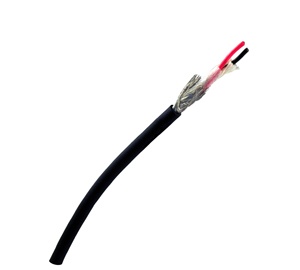Balanced Lines
Do you know the difference between a balanced line and an unbalanced line? If we're talking about analog audio, this difference between balanced and unbalanced is also the difference between consumer products, which are almost always unbalanced, and professional, which is almost always balanced. To go into the details of these differences would take a number of blogs, so I'm going to try and condense it here.
If you want to know more details, just invite me out to speak at your local group. Are you a member of the Society of Broadcast Engineers? Perhaps you joined the Society of Motion Picture and Television Engineers or the Audio Engineering Society. All three of these, and many other similar organizations, have local groups and often have lunch or dinner speakers. I would be delighted to fit you in my schedule and come give a presentation on balanced lines or many other subjects.

Balanced lines are a system that puts the audio signal on two wires. You do this by feeding the line and picking up the signal at the other end with an audio transformer. These days you can use a real wound coil of wire transformer or you can use a circuit that mimics that transformer, something called active balancing. The person who really put these active balanced circuits on the map was Greg Mackie while at Tapco, and at the company that followed, Mackie.
The reason that Mackie and many other similar companies can offer you a decent mixer for very little money is active balancing. Compared to a circuit or to a chip or two, real wound transformers are expensive and heavy, especially if their performance is any good. They are hard to make and a really good single wire-wound transformer can cost as much as a whole Mackie mixer. On the other hand, there have been lots of improvements in chip design over the years from folks like T.H.A.T. and their InGenius 1200, or the LMV831 family of chips from National Semiconductor. These chips are getting closer and closer to wire-wound real transformer performance and at a fraction of the cost.
The real secret is that a balanced line will reject electromagnetic noise (EMI, RFI) but allow the audio signal to go through. It will also reject noise from the pairs around it, like in a multi-pair snake cable or even from 50Hz or 60Hz power wiring. You absolutely must use balanced lines, if you are running any audio near lighting or power wiring.

Most consumer products have a single signal wire plus a shield. That is unbalanced. This has no way to reject noise except for the shield, and shield effectiveness is not all that great. The vast majority of noise rejection in a twisted pair is from the two wires in that pair and not from any shield around it. This is why we now offer unshielded pairs for audio, such as Belden 1353A.
This cable uses our patented Bonded-pair technology, invented for use with our network data cables. Having the two wires close together maximizes the noise rejection. We also offer our standard shielded cable, such as Belden 9451, which is a single twisted pair with a foil shield and a bare wire drain wire to make the connection to the shield. Most users of this style of cable are unaware that the shield doesn't even begin to work until 10 MHz or so and only becomes truly effective above 50 MHz. Of course all the audio itself is way below those frequencies and 50Hz/60Hz power at the bottom of that range. The only thing rejecting that noise is the twisted pair, and only when it is hooked up as a balanced line.
I remember back in the 1970s, my girlfriend's dad has a killer hi-fi system until they built Sutro Tower right behind him. Sutro Tower is a huge 900 ft. antenna farm for most of the major TV transmitters in the San Francisco Bay Area. By sheer coincidence, 20 years later, I was working there. All the radio frequency (RF) rendered his hi-fi system unusable until he modified his system to use balanced lines. Then it was again as clean as a whistle. He bought some expensive transformers to get it all to work.
And that's key: simply putting in twisted pairs will do nothing unless they are fed as balanced lines. There are lots of DIY sites and even some cable dealers that sell twisted pairs hooked up to RCA or other unbalanced systems. Doing that does not reduce RFI, EMI or anything else, except the amount of money in the customer's wallet.
For samples of the cables mentioned, we'd be glad to send you a short piece. Just call our Customer Service at 1-800-235-3361 (1-800-BELDEN-1).
![System.String[]](https://assets.belden.com/transform/03fc9f76-3aac-4627-9fbd-756f31cab5bc/steve-lampen?io=transform:fill,width:300,height:300)